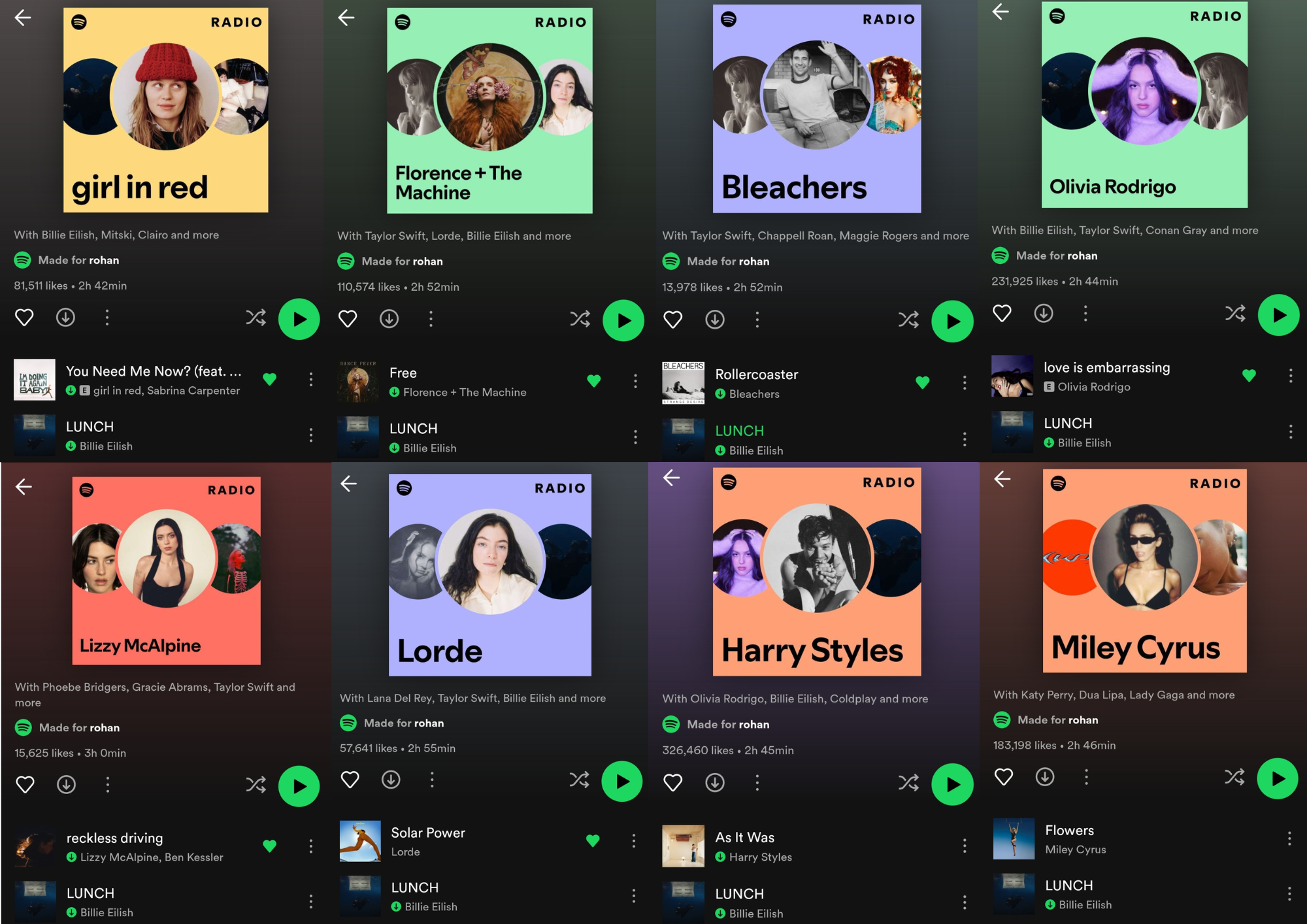In machine learning, there’s a concept of “temperature”: a parameter which controls the amount of randomness that’s fed in to the model’s predictions. When interacting with LLMs through their web interface, you can’t usually set the model temperature yourself, but when making API calls (or using the OpenAI playground) you can.1 I’d like social media sites and other platforms using recommender systems to include “thermostats” which allow consumers to adjust the amount of personalisation they receive.
I’m not a big social media user, but one place I’m very keen on having this feature is Gavin has a post about how Spotify is not a social network, which seems right to me.2 . Personalisation is meant to increase user engagement so that platforms can make more money from advertising (or keep users paying for premium services, I guess). But in my case, Spotify’s suggestions make the experience significantly worse. I’m constantly recommended the same songs when I’d much rather discover new music, and often I actively dislike the ones it persistently pushes me towards.3
For example, I find Billie Eilish’s song LUNCH
pretty boring and repetitive, so I skip it whenever it plays.
Yet Spotify seems determined to have me listen to it! It shows up on multiple Daily Mixes,
and is the second song on a strangely high number of the “Made for you” artist radio stations I have.

It seems implausible to me that LUNCH sounds like the music of all those singers and is being suggested everywhere because of sonic similarities. Possibly Spotify is being paid to promote the song, either directly or via lower royalties? If so, and the song isn’t explicitly marked as sponsored, I think that would be quite a misleading and borderline manipulative thing for them to be doing.
I think it could be improved with a dislike button. Spotify too. I can block specific songs, but not albums or artists. (On dating apps, when you close a profile you don’t click on a specific thing, whereas when you give a like – on Hinge at least – it’s on a particular image or prompt response. Again, I think the app is leaving personalisation data on the table here? Though it would make the UI a bit more complicated and require slightly more effort from users.)
Even better, you could have the chance to choose between multiple algorithms. (I’m sure I read an article about this but looks like I didn’t save it, and I can’t find it now.) I haven’t tried the following but possibly it does something like this: Selecta – Tune Your Own Spotify Recommendation Algorithm. Twitter has open-sourced its There’s a very interesting write-up about the code from Zvi here. , but there’s no way for users to opt in to an alternative one – yet you could very easily imagine an App Store of algorithms that people switch between.
For me at least, being able to raise the sampling temperature of my recommendations might well increase the amount of time I spend on Twitter. I’m wary of getting stuck inside a bubble of opinions, and so I set limits on how long to use the platform for. If I could periodically switch to a less filtered feed and reassure myself that I’m still seeing a relatively balanced mix of content (albeit of higher average quality) using the normal algorithm, I would be a lot less concerned about letting my consumption be at the mercy of the recommender system.
I also don’t think that adding this as an option would significantly reduce the engagement of the standard user. Probably they’d just stick with the vanilla algorithm and get polarising content as they currently do – and so the attention business model wouldn’t be adversely affected.
Possibly there’s another commercial or strategic motive that I’m missing out on which would lead platforms (including Spotify) to want to have users (including paying ones) trapped inside unsatisfying echo chambers? I can’t really think what it would be though.
So maybe there’s something here about enshittification? Because they’ve got Though I’d guess that YouTube and Apple Music have a similar catalogue, so there is some competition. than anyone else, Spotify can afford to be rubbish in other ways?4 Perhaps a little like how, because of its network size, Facebook can afford to be unbelievably difficult for developers.
-
Lower temperatures are more deterministic, higher ones more random; one way to remember it is hot = atoms move around very chaotically. ↩︎
-
Minor correction to his hypothesis that “users with just the user ID or a long alphanumeric hash as their name… might be the result of them deleting their account” – I think it’s just that previously they allowed you to specify your username when creating an account, whereas now you are just assigned one. Whether you have an old or new account, there’s no way to change your username though: another social network feature it’s lacking. ↩︎
-
Interestingly a couple of people have a positive experience with using Spotify for music discovery, but whenever I do what they suggest of letting the algorithm just play recommended songs, I only ever hear music I already know well. ↩︎